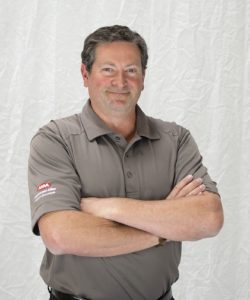As Covid remains rampant, 3 ideas for Portlanders looking to clear their air
Opinion Feature in Portland Business Journal by Gus Simonds:
With Covid-19 surging again, I am hearing from landlords and commercial building owners who want to take the time during the latest shut down to do all they can to prepare their buildings to safely welcome employees and customers back inside.
Many employees have been working from home since March because of Covid-19 fears. Ten months later, companies want to bring them back – to benefit from team collaboration, face-to-face contact and camaraderie. They also are anxious to welcome customers back in.
The key consideration, of course, is safety since we know the virus is airborne and spreads more easily indoors. Oregon OSHA recently issued new Covid-19 standards for all employers and all workplaces. These standards require all employers to complete an exposure risk assessment, develop and implement a Covid-19 infection control plan, train employees, and improve ventilation to reduce the spread of Covid-19 in indoor settings.
According to the standards, “All employers are required to ensure their existing HVAC system is set to optimize the amount of fresh air circulated through the indoor workplace. This increase in fresh air serves to lower, or dilute, the concentration of indoor pollutants, as well as any infectious agents that may be airborne in the environment, including … Covid-19.”
To make sure inside air is as safe to breathe as clean outside air, the American Society of Heating, Refrigerating and Air-Conditioning Engineers recommends the following solutions:
- Adjust building ventilation to bring in more outside air. ASHRAE recommends three changes of outdoor air before people come back into a building. Air should be completely flushed at the end of the workday so that employees or students return to clean air the next morning. When people are in the building, air should be flushed more often than in the past, even if it uses more energy and makes occupants a bit uncomfortable because of temperature and humidity fluctuations.
- Control humidity. A study published in the journal PLOS One showed that maintaining humidity levels above 43% cuts the ability of viruses like the flu to spread. While few local buildings have humidity controls, another solution is to place portable humidifiers in high-traffic areas such as a lobby or entrance – especially in the dryer winter months.
- Increase filtration to remove as many virus-collecting particles from the air as possible. Replace filters often with the finest ones that a system will allow. Filters are rated MERV 1 to 20. MERV 13+ filters are recommended for Covid-19. For systems that can’t accommodate MERV 13 filters, MERV 11 are the next best choice. HEPA filters also work to arrest very fine particles, but retrofitting an HVAC system not designed for HEPA filtration is difficult. Instead of replacing an entire system, consider setting up a smaller, recirculating HEPA filtration system in high-traffic areas such as a lobby or building entrance.
All of these solutions, used in conjunction with face masks and proper social distancing, will increase the safety of working indoors. They offer ways for landlords to visibly show tenants and employees that they are being proactive in reducing the risk for workers and customers to come inside to help get our economy humming again.
Learn more about MacDonald-Miller’s services here: Indoor Air Quality during COVID-19.

 With Covid-19 surging again, I am hearing from landlords and commercial building owners who want to take the time during the latest shut down to do all they can to prepare their buildings to safely welcome employees and customers back inside.
With Covid-19 surging again, I am hearing from landlords and commercial building owners who want to take the time during the latest shut down to do all they can to prepare their buildings to safely welcome employees and customers back inside.